Steven Spielberg had wanted to make the film version of Thomas Kennealy’s book Schindler’s Ark for several years before he finally produced his multi-Oscar-winning masterpiece. In this blog, it is going to be Schindler’s List the film that is the focus of attention.
The Girl in the Red Coat
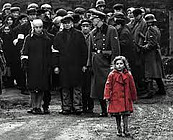
Spielberg chose to film in black and white to create an almost documentary feel reminiscent of those from the 1940s. However, during the liquidation of the ghetto sequence, a young girl wandering around during all the chaos is highlighted by her red coat. This scene is where the film begins to show Schindler’s change of heart towards saving Jews rather than manipulating them.
The film begins with Shabbat candles being lit, the flames of which are also in colour.
Spielberg told the young actress Oliwia Dąbrowska not to watch the film until she was eighteen, but she chose to when she was eleven and was horrified. Watching it as an adult she is now proud of her role.
Schindler’s List
A major subject of the Second World War, the Holocaust, had previously been only tentatively dealt with in the Big Red One. In 1987 Steven Spielberg had already approached the war with Empire of the Sun, 1993’s Schindler’s List was his second [technically third] foray into the subject. The film highlights the increasing power and independence of a small number of director-producers such as Spielberg.
Owning his own production company, Amblin, Spielberg exercised more control over all aspects of the film making process. He and other producers such as George Lucas gained this enviable position because of their previously highly successful films such as E.T. the Extra-Terrestrial in 1982 and Jaws in 1985. Therefore, Spielberg was able to start producing his long-term project, Schindler’s List.
An educational tool?
As the subject matter was contentious the whole project was a gamble but gained support from the film making industry. The contentiousness of the subject matter highlights the difficulty in utilising war films as an educational tool because of the lack of objectivity. Spielberg is himself Jewish which is a factor that could affect his objectivity greatly, but anyone with a conscience also abhors the gratuitous atrocities committed, therefore affecting their objectivity. In this way, the film supports John Keegan’s contention that even years after the war had ended the emotions it created continue to this day.
Set in wartime Poland, the film focuses on war profiteer Oscar Schindler (Liam Neeson) who realises that the ghettoised Jewish population of Krakow can provide him with cheap labour. 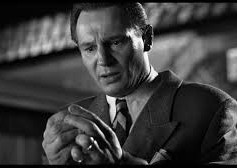 He establishes an enamelware factory and employs Itzhak Stern (Ben Kingsley) to manage for him whilst he wines and dines prospective clients in the military bureaucracy.
He establishes an enamelware factory and employs Itzhak Stern (Ben Kingsley) to manage for him whilst he wines and dines prospective clients in the military bureaucracy.
Stern sees the opportunity to fill the factory with his friends and acquaintances since, as essential workers, Schindler’s workers can leave the Krakow Ghetto to work. Schindler feigns ignorance while teachers, Rabbis, musicians, and the disabled are employed in his factory.
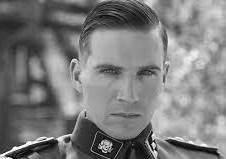
Meanwhile, Amon Göth (Ralph Fiennes), the commandant of the newly established Plascow hard labour camp, liquidates the Ghetto and herds survivors into his camp. Schindler’s charm is required to help bribe Göth into allowing workers to continue coming to his factory. As the film develops and through Stern’s influence, Schindler becomes protective of his workers taking a more prominent role in employing specific people on Stern’s advice. In the end, Schindler saved more than a thousand Jews, while producing faulty goods that contributed little to the war effort.
Is it the first?
Leonard Matlin has written that “this [film] looks and feels like Hollywood has ever made… As a result, this film is notable because it is the first time that Hollywood deals with the Greatest issue of World War II, the Holocaust.” In earlier films, the Holocaust was ignored, and it was not until The Big Red One that the victims of the Holocaust were seen for any significant duration. In dealing with the Holocaust in a major feature film:
“Director Steven Spielberg has achieved something close to impossible – a morally serious, aesthetically stunning historical epic that is nonetheless readily accessible to a mass audience.”
Schindler’s List is not a typical Hollywood Second World War film. Schindler is not the typical war hero, being an arrogant, hard-drinking, adulterous womaniser. He is not averse to blackmail or exploitation of slave labour for his own profit. He is, above all, fallible, not a trait common to Hollywood heroes. The relationship between Schindler and Stern is occasionally intense as Stern tries to convince him to help save workers. Initially, Schindler only wants to make money, but he realises the ultimate fate of the Jews when he witnesses the liquidation of the Ghetto and when his female workers are accidentally transported to Auschwitz.
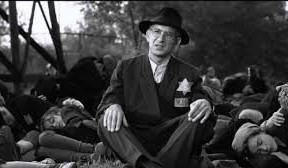
The importance of Schindler’s relationship with Stern is superseded only by Schindler’s relationship with Göth. The film portrays them as friends brought together by common interests of money, women, and alcohol. The similarities between them are juxtaposed throughout the film. Most significantly, this is highlighted as the two men prepare for work. Each is shown shaving and dressing, but then the similarities end, Schindler’s business is a morning ride with his mistress whereas Göth’s is the liquidation of the Ghetto. Such similarities are continually alluded to, highlighting how two individuals with common interests can be so different making one a hero and one the embodiment of evil.
How would this be different today?
I have no idea where I got some of these ideas from for this analysis, particularly the contention that there had not been many if any Holocaust films prior to Schindler’s List. Ironically, Google was created just before this thesis was being written and Wikipedia was created about the time it was completed, yet I did not have access to either. A quick search on the latter brought up multiple films and documentaries concerning the Holocaust.
This is the only film in the thesis that does not directly involve members of the military fighting. I was remiss to not mention this as one of the questions throughout the writing was the realistic portrayal of the war. By not highlighting the importance of the Holocaust as an integral element of the war I failed to answer this question in this instance.
Very little analysis is made of the film which is disappointing. Spielberg’s being Jewish is mentioned as a possible objectivity problem. However, I do not give any evidence to back this up or disprove this. Interestingly, I spent over a decade telling pupils not to make such sweeping statements without backing them up.
If I were to write this now, I would say that there is no evidence in the film to show that this is a problem. Despite what a minority might say, it is difficult to deny the horrors of the Holocaust. I guess rather than saying that no film had dealt with it before Schindler’s List, I should have said that no film had dealt with it so well.
Potentially, Spielberg’s greatest achievement with this film is that he set a benchmark for others to aspire to when dealing with this subject. He would go on to do so again with his next foray into the Second World War and the final film in this piece of work, Saving Private Ryan.
I would be very interested in your thoughts on this.
All the best,
BigT
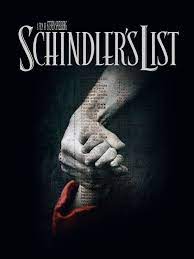
I’ve only watched this film once. I want to watch it again but it so profoundly upset me the first time that I’m reluctant to watch it again. Similarly, I can’t go near ‘The Boy In The Striped Pyjamas’.
I need to watch it again, with junior.
Yes it is a hard watch but well worth returning to it.